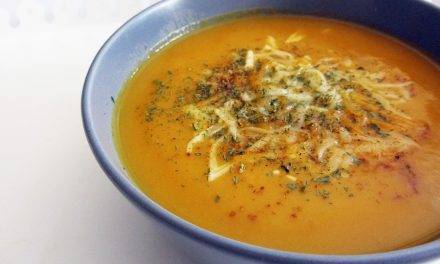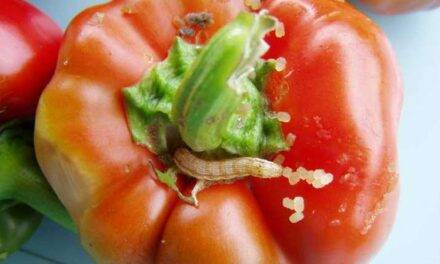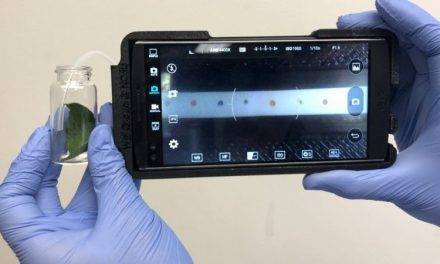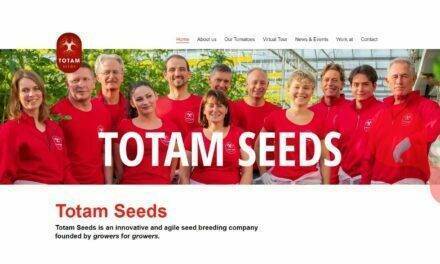
Are viruses in the gut of Asian Citrus Psyllid a control option of HLB?
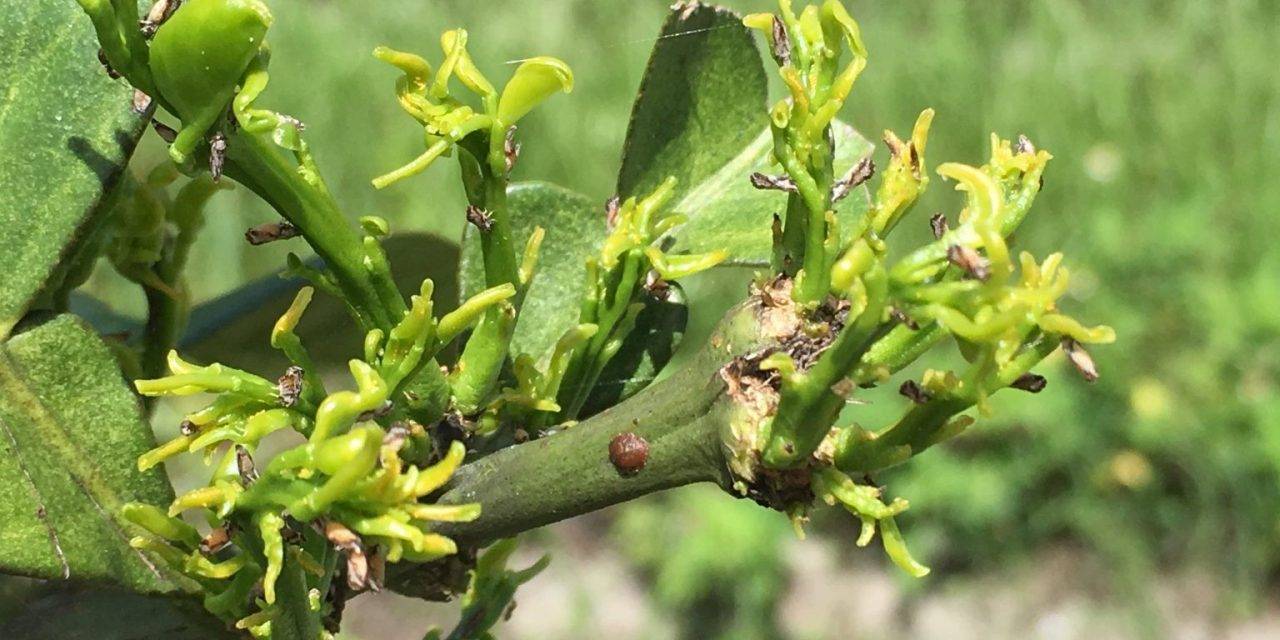
By Ozgur Batuman and Amit Levy
Management options for huanglongbing (HLB) are limited and rely heavily on insecticides for controlling Asian citrus psyllid (ACP) populations, even when integrated with other cultural control methods. Chemical strategies are expensive and, if not rotated, can contribute to the development of chemical resistance among ACP populations.
In some cases, long-term chemical applications may have negative effects on the environment and beneficial organisms. Protective screening, such as individual protective covers and citrus under protective screen, is one tactic researchers are exploring to protect new citrus plantings from HLB infection and to avoid the development of pesticide-resistant ACP populations. Other novel tactics that do not rely only on pesticides, including use of biological control agents for effective ACP management, are still much needed for long-term viability of the citrus industry.
Viral vectors
Viruses are the most abundant biological entity on Earth and can offer limitless biotechnological opportunities to explore and provide further knowledge of the CLas-vector interaction. Viral vectors have been documented as effective ways to deliver RNA interference (RNAi), a biological process in which RNA molecules inhibit gene expression by neutralizing targeted RNA molecules, into both plants and insects. They can be used for the biological control of the ACP and eventual disruption of HLB disease cycle.
Citrus tristeza virus (CTV) is currently used as a viral vector to deliver this RNAi technology into the citrus phloem and then into the ACPs that feed on citrus. However, these routes can be cumbersome, because they require an established infection in the citrus plant before delivering RNAi to the insect. Employing an insect virus that easily replicates and expresses proteins in the ACP can have the potential to deliver RNAi with higher efficiency and lower chances of deleterious, off-target effects.
Development of knowledge-based and efficient biological control strategies to disrupt HLB spread by current technologies (i.e., RNAi) in the ACP vector itself is a strategy to control the disease without relying solely on chemical applications. The necessity of a precise and specific biological control for Florida ACP populations initiated an ongoing University of Florida Institute of Food and Agricultural Sciences (UF/IFAS) study, with hopes to provide additional molecular tools.
In order to decrease or eliminate major dependence on broad-spectrum chemical controls, the study aims to investigate the Florida ACP body (i.e., gut) for an ACP-associated virus with the potential to be manipulated into a biocontrol agent against the HLB insect vector. The endemic establishment of both HLB and the ACP in Florida has greatly increased the need for alternative control options.
For this reason, the ongoing project was initiated in August 2017 in collaboration with many citrus growers to survey and characterize viruses infecting ACPs in Florida groves. The specific objectives of the project are:
To survey and determine the prevalence of viruses in ACPs in Florida citrus groves
To identify novel ACP-associated viruses
To explore the newly identified virus(es) as a potential biological agent and RNAi vector for ACP control.
Viruses identified
Beginning in August 2017, ACP adults and nymphs were collected monthly from more than 20 different commercial citrus groves, each representing a major citrus-producing county throughout south-central Florida. Five viruses that were previously identified in ACPs from different parts of the world by Bryce Falk’s group at University of California, Davis were successfully detected in adult and nymph ACP samples from surveyed Florida groves. These viruses include Diaphorina citri-associated C virus (DcACV), Diaphorina citri picorna-like virus (DcPLV), Diaphorina citri flavi-like virus (DcFLV), Diaphorina citri reovirus (DcRV) and Diaphorina citri densovirus (DcDNV). Genome analysis of these viruses detected in Florida citrus groves revealed that these viruses were very similar to those viruses reported around the world.
Among these five viruses detected in Florida, the DcACV has consistently remained the most prevalent virus in ACP populations screened during the entire study. DcACV, an RNA virus, was continuously detected in both adult and nymph ACP samples coming from each of the surveyed sites throughout the year, whereas the other viruses were not found as consistently or were primarily found in nymphs.
The second most prevalent virus in Florida ACP was the DcPLV, another RNA virus. The virus was detected in ACP adults and nymphs from all surveyed sites, but less frequently than DcACV.
DcFLV was detected at similar levels to DcPLV in adults and nymphs from all surveyed sites. DcDNV, the only DNA virus found in this study, was detected in ACP from all surveyed sites and appears to infect mainly nymphs. This virus has not previously been observed in Florida. The reovirus, DcRV, was found only in ACPs from two sites during the study. It is possible that DcRV is lethal to ACP, which would explain the scarcity of ACP with this virus in our surveys.
Further studies conducted on grove-collected ACPs identified two new ACP-infecting viruses: another reo-like virus and a picorna-like virus. The new reo-like virus was later surveyed and detected in both adult and nymph ACP populations in Florida. One of the unexpected outcomes of the results, however, was the discovery that CTV, another devastating citrus disease (see the May 2019 Citrus Industry issue), is extremely abundant in the ACP guts. These results cautiously suggest that, although CTV does not cause noticeable decline or induce symptoms in citrus trees, the virus persists throughout Florida. The abundance of CTV and other unknown viral sequences detected in ACP guts warrants further research to determine the function of these viruses.
The complete article, available on Source, explains the next steps in the research.
About the authors
Ozgur Batuman and Amit Levy are UF/IFAS assistant professors at the Southwest Florida Research and Education Center in Immokalee and the Citrus Research and Education Center in Lake Alfred, respectively.
Source
Citrus Industry, Viruses in the Gut of Asian Citrus Psyllid: Friends or Foes?
Figure, Asian citrus psyllid adults, the insect vectors of HLB, feed on feather shoots of a young citrus tree (photo by Ozgur Batuman)










